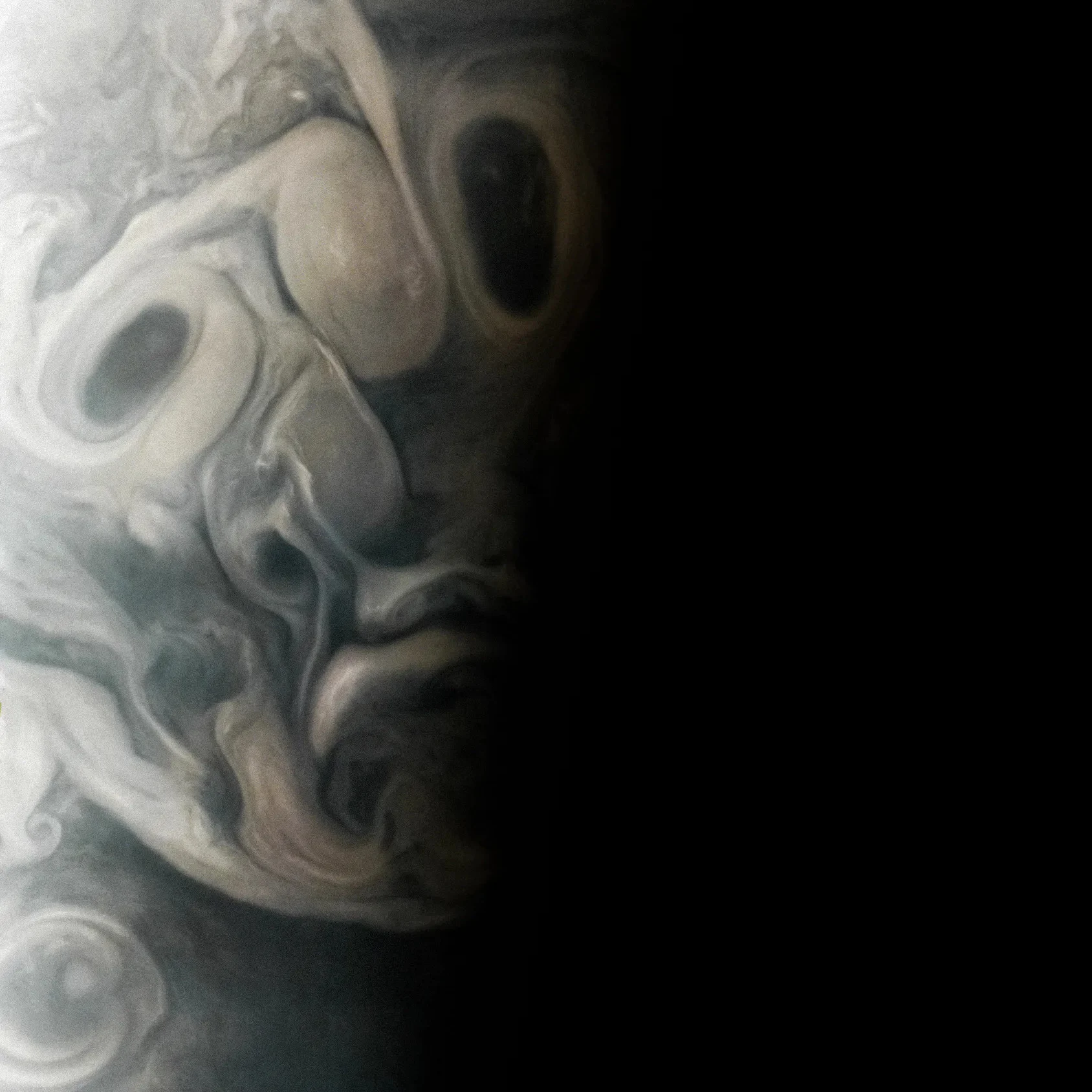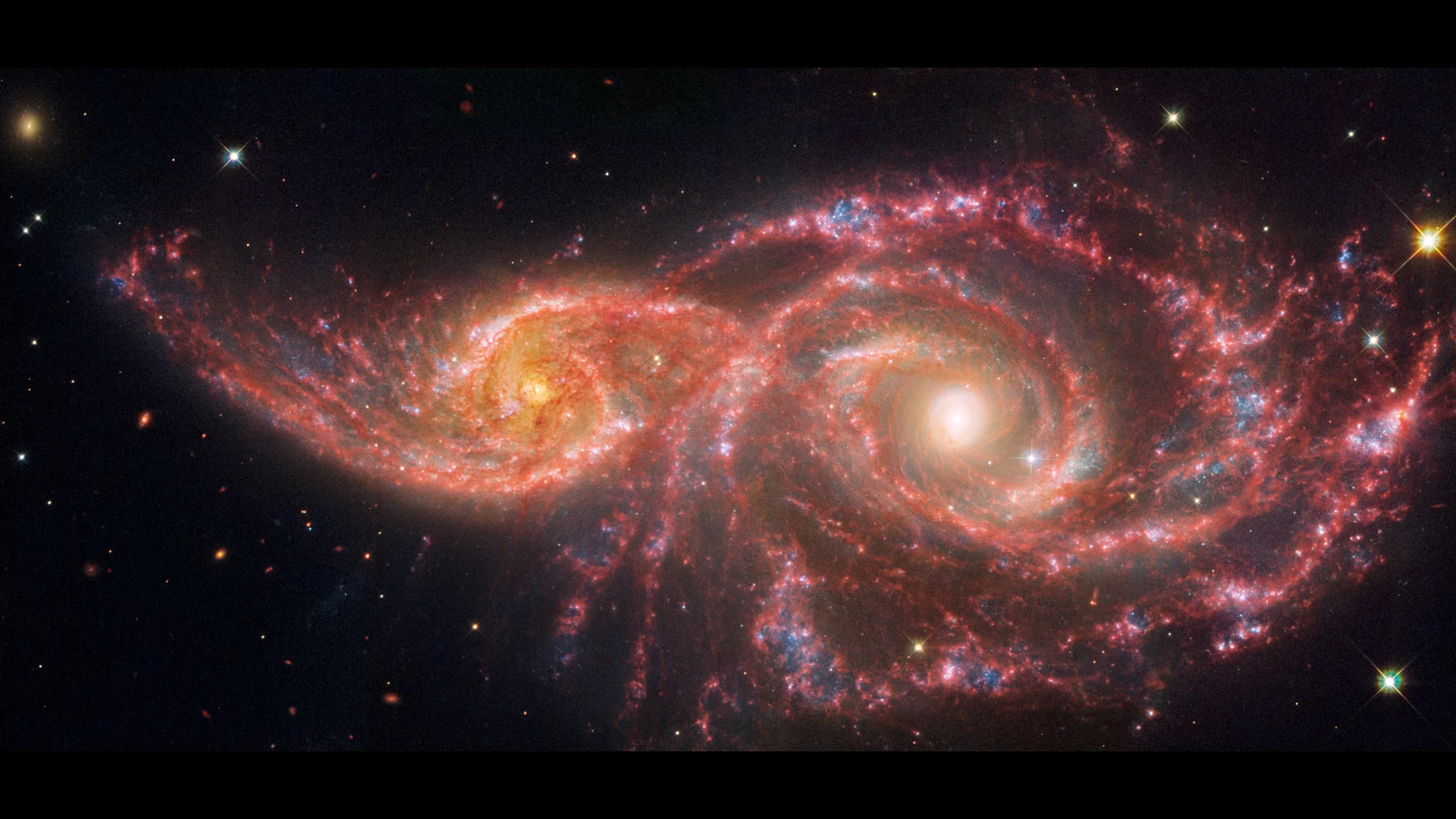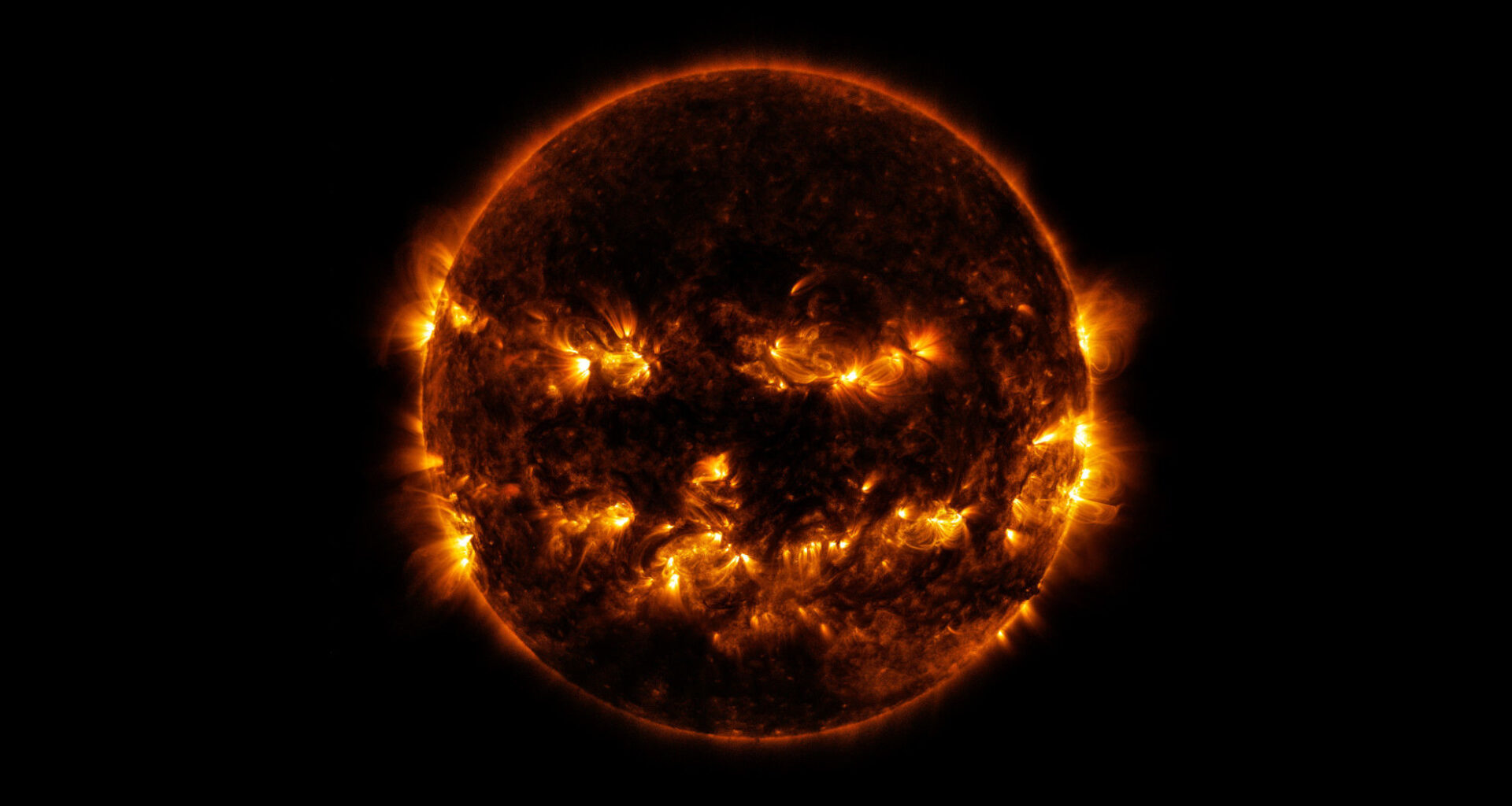
Captured just along the terminator into night (the diagonal shadowed region that splits the image in half), the cloud patterns on Jupiter appear to form two misaligned eyes, a wide nose with a nostril, and a set of frowning lips. This image was captured by the Juno spacecraft on Sep. 7, 2023, during its 54th close flyby of Jupiter. (NASA/JPL-Caltech/SwRI/MSSS, Vladimir Tarasov)
According to NASA: “The image shows turbulent clouds and storms along Jupiter’s terminator, the dividing line between the day and night sides of the planet. The low angle of sunlight highlights the complex topography of features in this region, which scientists have studied to better understand the processes playing out in Jupiter’s atmosphere. As often occurs in views from Juno, Jupiter’s clouds in this picture lend themselves to pareidolia, the effect that causes observers to perceive faces or other patterns in largely random patterns. Citizen scientist Vladimir Tarasov made this image using raw data from the JunoCam instrument. At the time the raw image was taken, the Juno spacecraft was about 4,800 miles (about 7,700 kilometers) above Jupiter’s cloud tops, at a latitude of about 69 degrees north.”
NASA’s Juno spacecraft has been orbiting the planet Jupiter since July 2016. As of October 23, 2024, the probe has performed 66 ‘perijoves’ — close passes around the gas giant. On each flyby it snaps pictures of the planet’s swirling cloud bands and conduct gravity science to refine what we know about the planet’s inner structure. More recently, Juno has been making close passes by Jupiter’s largest moons, with the most recent pass by the volcanic moon, Io.
MORE FROM SPACE: Volcanic Io imaged in spectacular detail by NASA’s Juno probe
The Eyes of the Cosmos
Just in time for Hallowe’en in 2024, Hubble and JWST captured an image of two interacting spiral galaxies — IC 2163 and NGC 2207 — which appeared as spooky red-tinged eyes staring at us from the cosmic beyond.

Spiral galaxies IC 2163 (left) and NGC 2207 (right) are presented in combined data from two of our most powerful space telescopes. The pair’s macabre colors represent a combination of mid-infrared light from NASA’s James Webb Space Telescope with visible and ultraviolet light from NASA’s Hubble Space Telescope. (NASA, ESA, CSA, STScI)
According to the Space Telescope Science Institute (STScI), these two galaxies have only ‘grazed’ by each other, with IC 2163 (smaller, to the left) passing behind NGC 2207 (larger, to the right) over the last million years or so. During this close pass, the gravitational pull of each galaxy has influenced the other, possibly distorting the shape of their spiral arms, but most definitely sparking intense star formation.
“To spot the star-forming ‘action sequences’, look for the bright blue areas captured by Hubble in ultraviolet light, and pink and white regions detailed mainly by Webb’s mid-infrared data,” STScI said.
For just how intense this star formation is, STScI explained that both of these galaxies, combined, are estimated to be producing two dozen new stars like our Sun every year. Comparatively, our own Milky Way galaxy only forms two or three new Sun-like stars each year.
Watch below: How to stay warm while trick-or-treating this Halloween

